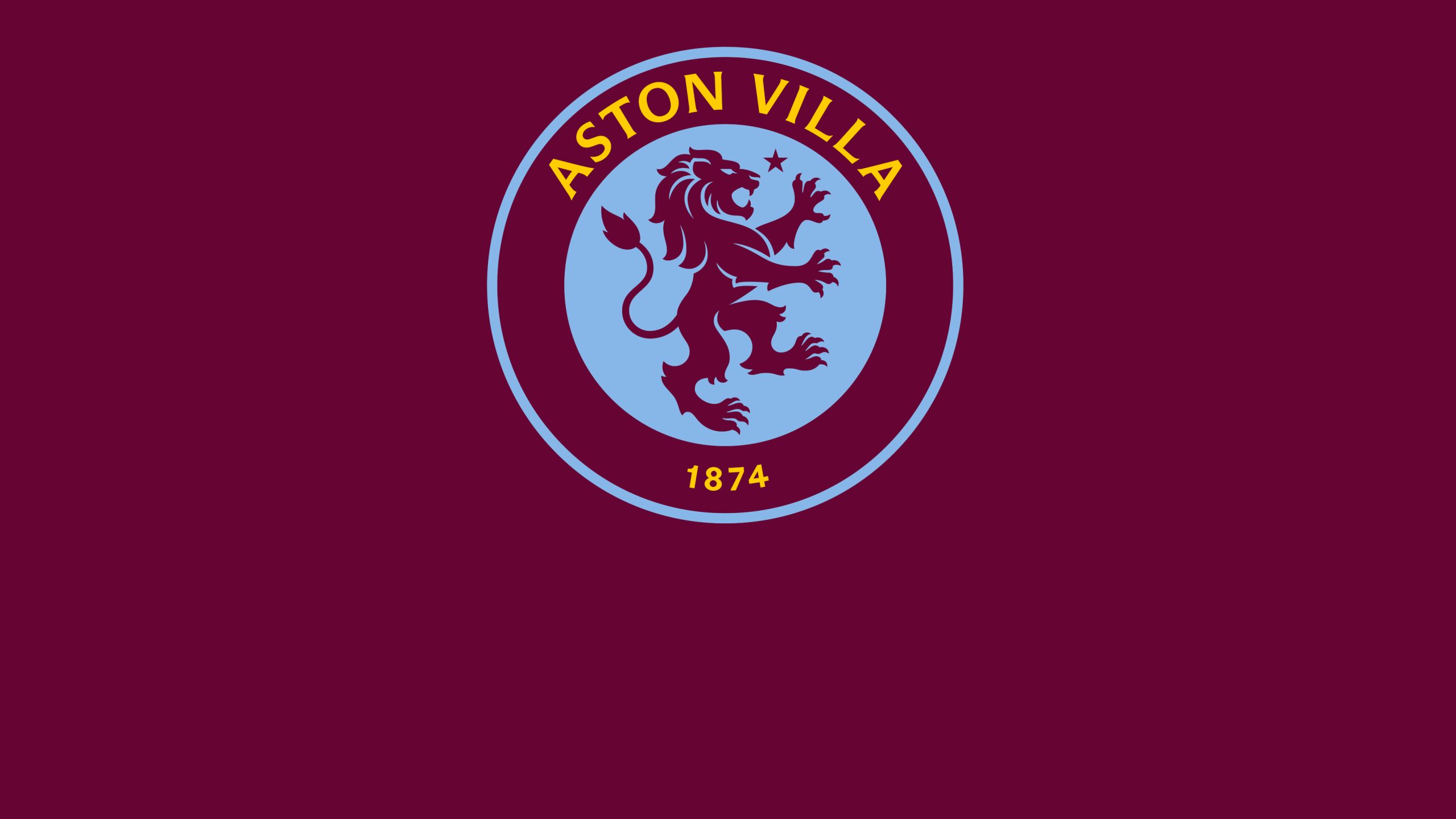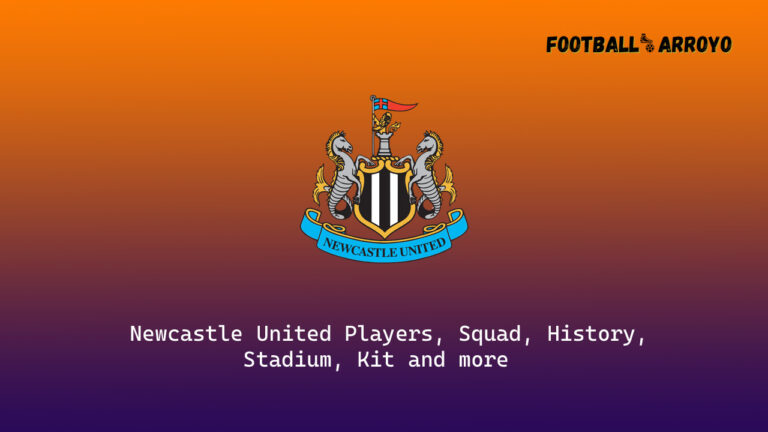Aston Villa 2023/24 Players, Squad, World Rankings, History, and more

Aston Villa Football Club (sometimes nicknamed Villa, The Villa, The Villans, and The Lions) is an English football club based in the city of Birmingham, which currently plays in the Premier League.
Founded on November 21, 1874, by members of a cricket team, it has hosted games at its stadium, Villa Park, since 1897. Villa was one of the founders of the first football league in the world, the Football League, in 1888 and it was also one of the founding members of the Premier League in 1992. In 2016 it was bought by Chinese businessman Tony Xia.
Aston Villa is one of the oldest and most successful clubs in English football history. It is the second club with the highest number of first division appearances in its country and is the fifth with the highest total number of major titles won by a club in England, having won the first division seven times and the FA Cup also seven times, in addition to of five League Cups and one FA Super Cup. Internationally, Aston Villa were European champions by winning the 1981-82 European Cup, as well as the 1982 European Super Cup and 2001 Intertoto.
It has a long-standing sporting rivalry with Birmingham City, from the same city, and the classic between the teams has been going on since 1879, a match that bears the name of the Second City derby. The traditional uniform brings together the colors wine and sky blue on the shirt. Its shield is represented by a golden lion on a light blue background, having been modernized in 2016.
In this article, you will get to know about Aston Villa 2023/24 Players, Squad, Owner, World Rankings, Nickname, History, and more.
Team Profile summary
| Team | Aston Villa Football Club |
| Nickname(s) | Villans, The Villa, The Lions, The Claret & Blue Army |
| Home Stadium | Villa Park |
| Stadium Capacity | 42,682 |
| Location | Birmingham |
| Founded | 1874 |
| Website | http://www.avfc.co.uk/ |
| League | 2022–23 Premier League |
| Manager | Steven Gerrard |
Aston Villa History
Aston Villa Football Club was founded in 1874 by members of the Villa Cross Wesleyan Chapel cricket team who were looking for something to keep them busy during the winter. The four founders were Jack Hughes, Frederick Matthews, Walter Price, and William Scattergood. Aston Villa’s first game was against local rugby team Aston Brook St Mary. As a condition of the match, the Villa team had to agree to play the first half with rugby rules and the second with football rules. The game ended in a goalless draw in the first half, but Jack Hughes scored a goal in the second, securing Villa’s victory in their first game. After moving to Wellington Road in 1876, they established themselves as one of the best teams in the Midlands, and in 1880 they won their first title, the Birmingham Senior Cup, with Scotsman George Ramsay as captain.
In 1884, former captain George Ramsey becomes club secretary. This role, at the time, performed activities today carried out by managers, such as being responsible for the team, as well as for recruiting and transferring players. In the 1886/1887 season, the club won its first FA Cup, captained by Archie Hunter, who became one of the club’s biggest idols. Villa defeated rivals West Bromwich 2-0 in the final held at The Oval. Until 1885, football was amateur. He turned professional in 1885 when the FA legalized professional football but with a national salary cap. However, Aston Villa’s Scottish director William McGregor was frustrated to see his team’s games canceled and matches with the little audience. He saw that for people to be interested in the sport, top teams would need to play each other in a championship, just as American baseball teams did. McGregor wrote to England’s top clubs proposing the formation of a league.
As a result, the Football League was founded in 1888 with Aston Villa as one of the twelve founding clubs and their first game in the competition was against Wolverhampton Wanderers, which ended in a 1-1 draw. end of the first season. It didn’t take long for Villa to lift their first League trophy, and this was achieved in 1894. The club became the most successful of the Victorian era, winning four more league championship titles (1896, 1897, 1899, and 1900) and two more FA Cups (1895 and 1897). In 1897, the year Villa won the double, they moved into their current home, the Aston Lower Grounds, better known as Villa Park.
1900 to 1960
Aston Villa started the 20th century as champions, but the difference that distinguished them from their competitors was diminishing. Football in England was becoming more competitive, with more teams being formed. Aston Villa won the 1905 English Cup, while in the 1909-1910 season they were English champions after eleven years, in which they beat Manchester United 7-1. The following season, Villa finished sixth, but in 1913, won the FA Cup.
After winning their sixth FA Cup in 1920, their last title with George Ramsey as secretary, who eventually left in 1926 after 42 years at the club, Aston Villa went into a decline that led to them being relegated for the first time, dropping to the second division in 1936. This was largely the result of poor defensive performance: 110 goals in 42 games, 7 of them coming from Ted Drake in the famous 7-1 defeat by Arsenal at Villa Park.
During World War II, Aston Villa and every club in England lost seven seasons, and many football careers had been cut short as a result of the conflicts. After the war, the team was rebuilt under the guidance of former player Alex Massie for the remainder of the 1940s. After 37 years without titles, in the 1956-57 season, another ex-Villa player Eric Houghton led the club. to a great achievement by winning the FA Cup in a final against Manchester United. Although the team struggled in the league, they were relegated two seasons later. However, under Joe Mercer Villa returned to the top in 1960 as second division champions. This season, the club became the first team to win the League Cup.
1960 to 1982
Mercer’s forced departure in 1964 marked a period of profound upheaval. Suddenly, one of England’s most successful clubs was struggling to keep pace with the changes in modern football and in 1967, under manager Dick Taylor, the team was relegated again. The following season they finished sixteenth in the Second Division table, and fans asked the board to resign. Initially, the board decided to fire Cummings (the manager hired to replace Taylor), but it was only a matter of weeks before the entire board resigned due to pressure from fans.
After much speculation, control of the club was purchased by London financier Pat Matthews, who also brought in Doug Ellis as president. The new owner could not stop the decline of their newly acquired club, so for the first time in their history, Villa reached the Third Division in the 1969-1970 season. However, Aston gradually began to recover under the management of former club captain Vic Crowe. In the 1971-1972 season, he returned to the second division as a champion of the third, with a record of seventy points.
In 1974, Ron Saunders took over the direction of the team, proving their effectiveness by winning the League Cup the following season, and in 1975 by taking them back to the top flight. With the team back in the elite, Saunders continued to shape a winning team. This culminated in their winning their seventh league title in 1981, after a 70-year fast. Despite this hegemony, and to the surprise of fans, Saunders is removed from office midway through the 1981-1982 season after an argument with the club president, leaving Aston in the quarter-finals of the European Cup.
1982 to 2001
He was replaced by his assistant Tony Barton, who guided the club to a 1-0 win over Bayern Munich in the European Cup final in Rotterdam, with a goal from Peter Withe. The following season he was champion of the European Supercup, beating Barcelona. Even though this was one of the most successful periods in the club’s history, Aston Villa was relegated a few years later, in 1987. The following year they ended up rising under the command of Graham Taylor, who also reached the runner-up in the First Division in the 1989-1989 season. nineteen ninety.
In 1992, Aston Villa was one of the founding members of the Premier League and ended the competition’s inaugural season as runners-up, second only to Manchester United. For the rest of the nineties, however, Villa had three different managers and their league positions were inconsistent, despite winning two League Cups and regularly reaching UEFA Cup qualification. In 2000, they reached the FA Cup Final but ended up losing to Chelsea 1-0, held at the former Wembley Stadium. The club was one of the three champions of the 2001 UEFA Intertoto Cup as they beat Switzerland‘s Basel 5–2 on aggregate.
2007 to 2016
In the following seasons, the club alternated its results and coaches, finishing in middle positions in the table, but stabilizing in the first division. In 2006, after 23 years as chairman and largest single shareholder (approximately 38%), Ellis finally decided to sell his stake in Aston Villa due to health issues. After much speculation, it was announced that the club was being bought by American businessman Randy Lerner, who owns an NFL club, Cleveland Browns.
The arrival of a new owner and manager Martin O’Neill marked the beginning of a period of major changes that took place throughout the club, including a new crest, a new sponsor, and team changes in the summer of 2007 and performing well in the Premier League. League, having reached the sixth position in three consecutive seasons (2007-08, 2008-09, and 2009-10). The first final of the Lerner Era came in 2010 when Villa was beaten 2-1 in the League Cup. Villa made a second trip from Wembley but lost 3-0 to Chelsea in the FA Cup semi-final. Just five days before the opening day of the 2010-2011 season, O’Neill resigned.
The B team manager took over the club before Gérard Houllier was hired in September 2010. Houllier stepped down on 1 June 2011, and was replaced by Birmingham’s Alex McLeish despite numerous fan protests against his appointment. . This was the first time that a manager had transferred directly from Birmingham to Villa. McLeish only spent eleven months in the job, and his contract ended at the end of the 2011-2012 season, in which Villa was only 16th, just two places above the relegation zone. He was replaced by then Norwich City manager Paul Lambert. The club was put up for sale in 2014.
In February 2015, Lambert was sacked after the team had scored just twelve goals in 25 games. Tim Sherwood was his successor and saved the team from relegation, as well as reaching the FA Cup final, having lost to Arsenal 3-0. Sherwood was eventually sacked the following season and was replaced by Rémi Garde, who was later replaced by Roberto Di Matteo when, in the 2015/16 season, Aston Villa dropped down a division in English football, being last placed. Di Matteo left the club after a poor start to the second division, being replaced on an interim basis by Steve Clarke.
Aston Villa had to spend 3 seasons in the EFL Championship, the English second division.
Season 2016-17
His first season in the EFL Championship, 2016-17, was full of ups and downs, the club must settle for the 13th position with 62 points, and 18 points from 6th placed Fulham, which is the position that puts the possibility of promotion to Premier League.
His second season in the EFL Championship, 2017-18, was already much better than the first, ranking 4th with 83 points, thus qualifying for the Premier League Promotion Play-Offs. In the semi-final Aston Villa played against Middlesbrough, winning the first game 1-0 at Riverside Stadium, home of the opposing team with a goal by Mile Jedinak. In the second game, Aston Villa only held the advantage at Villa Park, drawing 0-0 and advancing to the final. The final was played at Wembley against Fulham, with Aston Villa losing 1-0.
In their third season in the EFL Championship, in 2018-19, Aston Villa performed worse on points than the previous season, finishing in 5th place with 76 points, qualifying again for the play-offs. In the semi-final, Aston Villa played against West Bromwich when in the first game at Villa Park Aston Villa won by a score of 2-1. The second game at The Hawthorns was exciting, with West Bromwich winning 1-0 when in the 80th minute a player from the opposing team was sent off, however, the match went to penalties with Aston Villa winning 4-3 and so on. getting a spot in the play-off final, qualified to face the Derby County team.
Season 2019–20
In the play-off final played at Wembley, the Birmingham team defeated Derby County 2–1 with goals from El-Ghazi and McGinn, earning their spot in the 2019–20 Premier League after 3 seasons.
2021-22 season
On the eve of Villa’s Premier League return, NSWE purchased minority share ownership of the Recon Group, meaning that Xia no longer had any stake in the club. In Villa’s first season in the Premier League, the team battled relegation for most of the season but managed to avoid it with a 17th-place finish, staying up until the last day. In Villa’s second season in the Premier League, Smith oversaw an 11th-place finish but was unable to persuade star player and captain Jack Grealish to remain at the club when Manchester City’s £100m British offer triggered his release clause. Following a poor start to the 2021-22 season, which saw seven defeats in the club’s first 11 games, Dean Smith was sacked.
Aston Villa appointed former England captain Steven Gerrard as head coach on November 11, 2021.
Aston Villa Home Stadium
Aston Villa’s home ground is Villa Park, a UEFA Category 3 stadium (out of a maximum of 4), which opened on 17 April 1897 in a friendly against Blackburn Rovers. Previously, the team played at Aston Park (1874–1876) and Wellington Road (1876–1897). The stadium, which has gone through several phases of renovation and development throughout its history, is the largest in the Midlands and the eighth largest in England. It has hosted 16 England matches, the first in 1899 and the most recent in 2005, making it the first English stadium to host international matches in three different centuries. Villa Park has hosted more FA Cup semi-finals than any other stadium, 55 to date. In addition to football, the stadium has seen numerous concerts along with other sporting events including boxing matches and rugby matches. In 1999, the last Cup Winners’ Cup final took place at Villa Park and the 2012 FA Community Shield was also held at the stadium. It has also hosted the 1966 World Cup and UEFA Euro 1996.
The current training facility is located on Bodymoor Heath in northern Warwickshire, a site purchased by former President Doug Ellis in the 1970s from a local farmer. Although Bodymoor Heath was modern at the time, it fell out of date in the late 1990s. In November 2005, Ellis and Aston Villa announced a £13 million investment for the two-phase redevelopment of Bodymoor. However, work on Bodymoor was put on hold by Ellis due to financial problems and remained unfinished until new owner Randy Lerner made it one of his priorities, which was to make CT one of the best in world football. The new training ground was officially unveiled on 6 May 2007 by then-coach Martin O’Neill, then captain Gareth Barry and 1982 UEFA Champions League champion captain Dennis Mortimer.

Aston Villa Kit
A new shield was released on May 2, 2007, with the arrival of the new owner. It included a star to represent the European conquest in 1982, and has a blue backlight behind the “ferocious lion”. The traditional motto “Preparado” remains on the emblem and the Aston Villa name has been shortened to AVFC, FC has been omitted from the previous kit. The lion is now unified as opposed to the fragmented lions of the past. Randy Lerner asked fans to help with the design of the new uniform. In 2016, it was changed again with the size of the lion (which now has claws) and the club’s acronym bigger, with the removal of the word “Prepared”.
Kit sponsorship
Aston Villa’s kit was produced by local manufacturers until 1974 when Umbro became the first kit supplier to have its logo on a Villa shirt. Since then, the kit has been manufactured by a number of different suppliers including Le Coq Sportif, Reebok, Nike, and Kappa. Aston Villa’s first shirt sponsor was Davenports Breweries in the 1982–83 season.
Since then, shirts have borne the logos of a number of local and national companies including AST Computers and Rover. Aston Villa forwent commercial kit sponsorship for the 2008–09 and 2009–10 seasons; instead of advertising the charity Acorns Children’s Hospice, the first deal of its kind in Premier League history.
The partnership continued until 2010 when a commercial sponsor replaced Acorns, with the hospice becoming the club’s Official Charity Partner. In 2014–15, the Acorns name returned to Aston Villa’s home and away shirts, but only for children’s shirts re-affirming the club’s support for the children’s charity.
A shirt sleeve sponsor was used for the first time in the 2019–20 season with BR88 being displayed. The kit manufacturer for the 2020–21 season is Kappa with car sales website Cazoo as the shirt sponsor and gambling company LT as the sleeve sponsor.
Here is Aston Villa Kit 2023/24, Home, Away, and Third Jersey by Castore.
Who are Aston Villa 2023/24 players Squad?
The following Aston Villa players were called up for the Aston Villa 2023/24 players. Have a look.
| 42 | Filip Marshall | Poland | 24/04/2003 |
| 1 | Emiliano Martínez | Argentina | 02/09/1992 |
| 25 | Robin Olsen | Sweden | 08/01/1990 |
| 15 | Álex Moreno | Spain | 08/06/1993 |
| 2 | Matty Cash | Poland | 07/08/1997 |
| 16 | Calum Chambers | England | 20/01/1995 |
| 3 | Diego Carlos | Brazil | 15/03/1993 |
| 12 | Lucas Digne | France | 20/07/1993 |
| 59 | Josh Feeney | England | 06/05/2005 |
| 30 | Kortney Hause | England | 16/07/1995 |
| 4 | Ezri Konsa | England | 23/10/1997 |
| 17 | Clément Lenglet | France | 17/06/1995 |
| 5 | Tyrone Mings | England | 13/03/1993 |
| 14 | Pau Torres | Spain | 16/01/1997 |
| 31 | Leon Bailey | Jamaica | 09/08/1997 |
| 10 | Emiliano Buendia | Argentina | 25/12/1996 |
| 32 | Leander Dendoncker | Belgium | 15/04/1995 |
| 6 | Douglas Luiz | Brazil | 09/05/1998 |
| 47 | Tim Iroegbunam | England | 30/06/2003 |
| 44 | Boubacar Kamara | France | 23/11/1999 |
| 7 | John McGinn | Scotland | 18/10/1994 |
| 58 | Tommi O’Reilly | Ireland | 15/12/2003 |
| 41 | Jacob Ramsey | England | 28/05/2001 |
| 8 | Youri Tielemans | Belgium | 07/05/1997 |
| 19 | Moussa Diaby | France | 07/07/1999 |
| 24 | Jhon Durán | Colombia | 13/12/2003 |
| 71 | Omari Kellyman | Northern Ireland | 25/09/2005 |
| 9 | Bertrand Traoré | Burkina Faso | 06/09/1995 |
| 11 | Ollie Watkins | England | 30/12/1995 |
| 22 | Nicolò Zaniolo | Italy | 02/07/1999 |
Aston Villa Owner
After failing to secure promotion to the Premier League in the 2017–18 season, speculation began to mount about financial difficulties at the club. This prompted owner Tony Xia to seek additional investment. On July 20, 2018, it was announced that the NSWE group, an Egyptian company owned by Egyptian billionaire Nassef Sawiris and American billionaire Wes Edens, would invest in the football club. They bought a 55% majority stake in the club and Sawiris took over as club president. On 9 August 2019, on the eve of Villa’s Premier League return, documents from Companies House revealed that the minority share ownership of the Recon Group had been purchased and that Dr Tony Xia no longer held any stake in the club.
Who are the Aston Villa captain and coach?
Tyrone Mings is captain of the team and Steven Gerrard is the coach of Aston Villa FC.
Aston Villa captain
Have a look at the profile summary of Aston Villa’s current captain.
Profile summary
- Name: Tyrone Mings
- Date of birth/Age: Mar 13, 1993 (29)
- Place of birth: Bath
- Citizenship: England
- Height: 1,96 m
- Position: Centre-Back
- Agent: Wasserman
- National player: England
- Caps/Goals: 17 / 2
Aston Villa Coach
Have a look at the profile summary of the team’s current coach.
Profile summary
- Name: Steven Gerrard
- Date of birth/Age: May 30, 1980 (42)
- Place of birth: Whiston
- Citizenship: England
- Agent: Wasserman
- Avg. the term as coach: 1.42 Years
- Preferred formation: 4-3-3 Attacking
Aston Villa world rankings
Aston Villa is at #77 in the world rankings.
Aston Villa national football team trophies
League titles
- First Division / Premier League:7
Champions: 1893–94, 1895–96, 1896–97, 1898–99, 1899–1900, 1909–10, 1980–81
- Second Division / First Division / Championship: 2
Champions: 1937–38, 1959–60
Play-off Winners: 2018–19
- Third Division / Second Division / League One: 1
Champions:1971–72Cups
- FA Cup: 7
Winners: 1886–87, 1894–95, 1896–97, 1904–05, 1912–13, 1919–20, 1956–57
- League Cup / EFL Cup: 5
Winners: 1960–61, 1974–75, 1976–77, 1993–94, 1995–96
- FA Charity Shield / FA Community Shield: 1
Winners: 1981
European
- European Cup / UEFA Champions League: 1
Winners: 1981–82
- European Super Cup / UEFA Super Cup: 1
Winners: 1982
- Intertoto Cup: 2
Winners: 2001, 2008
Source: FootballArroyo.co.uk






